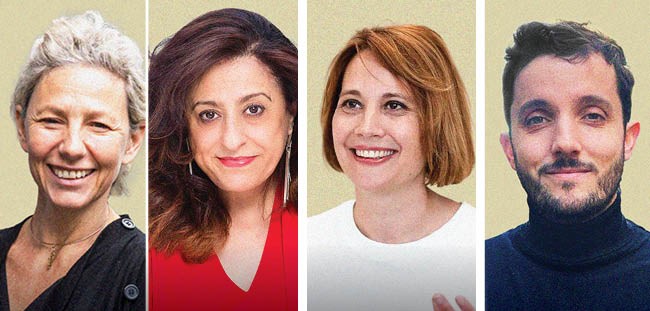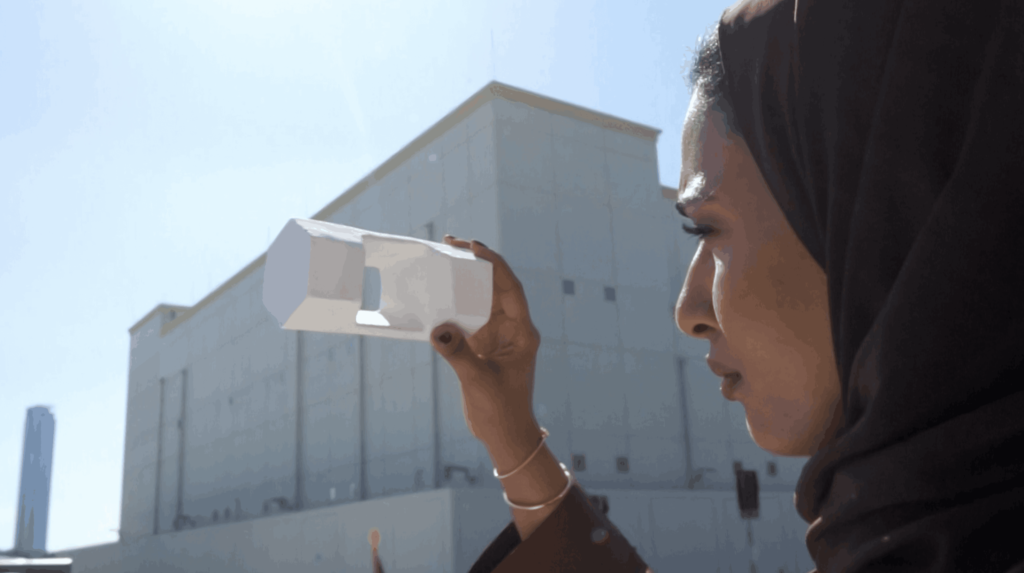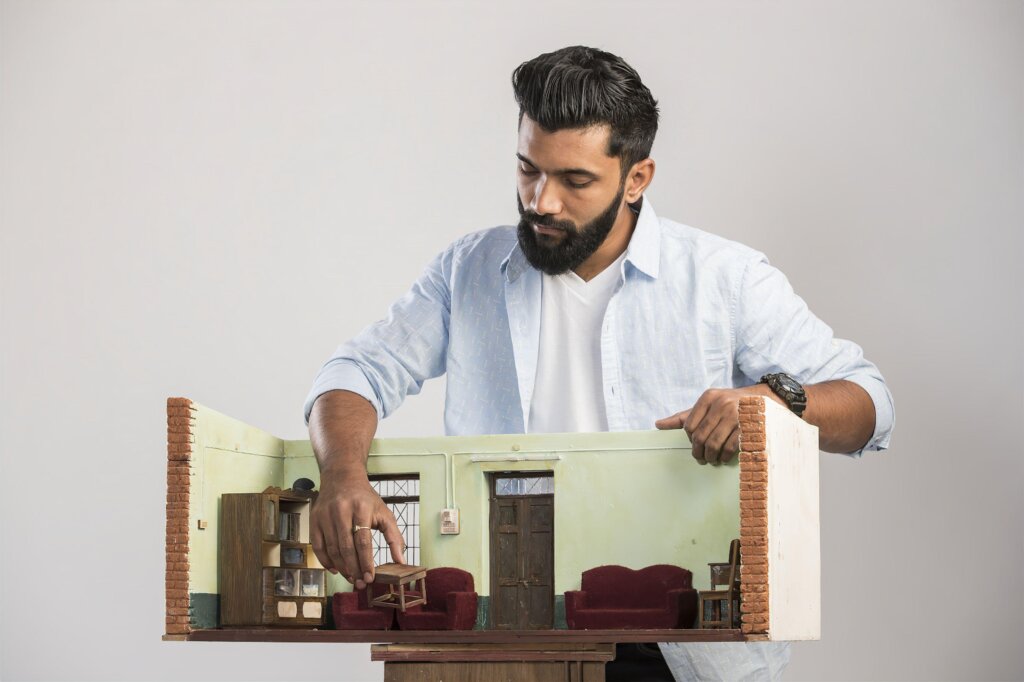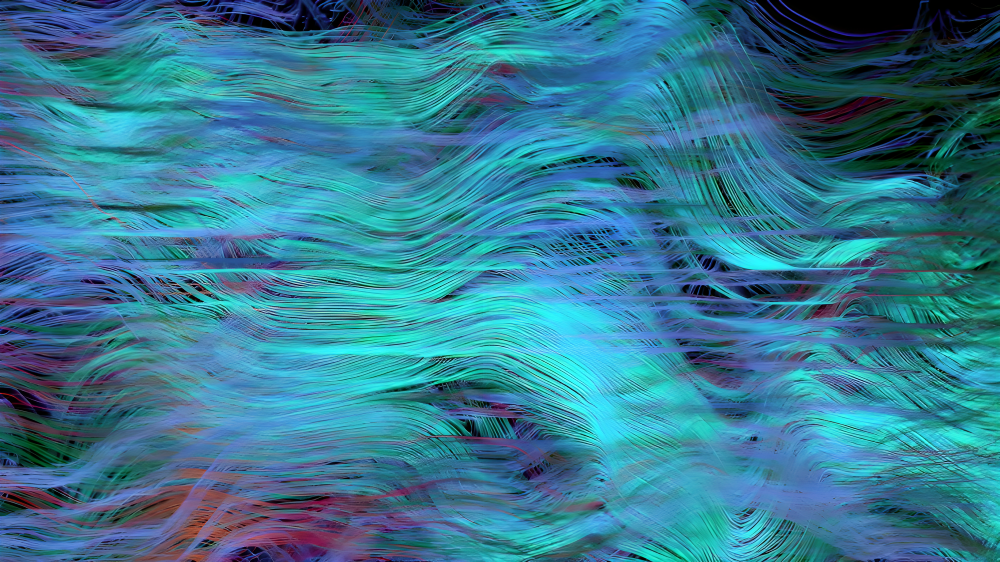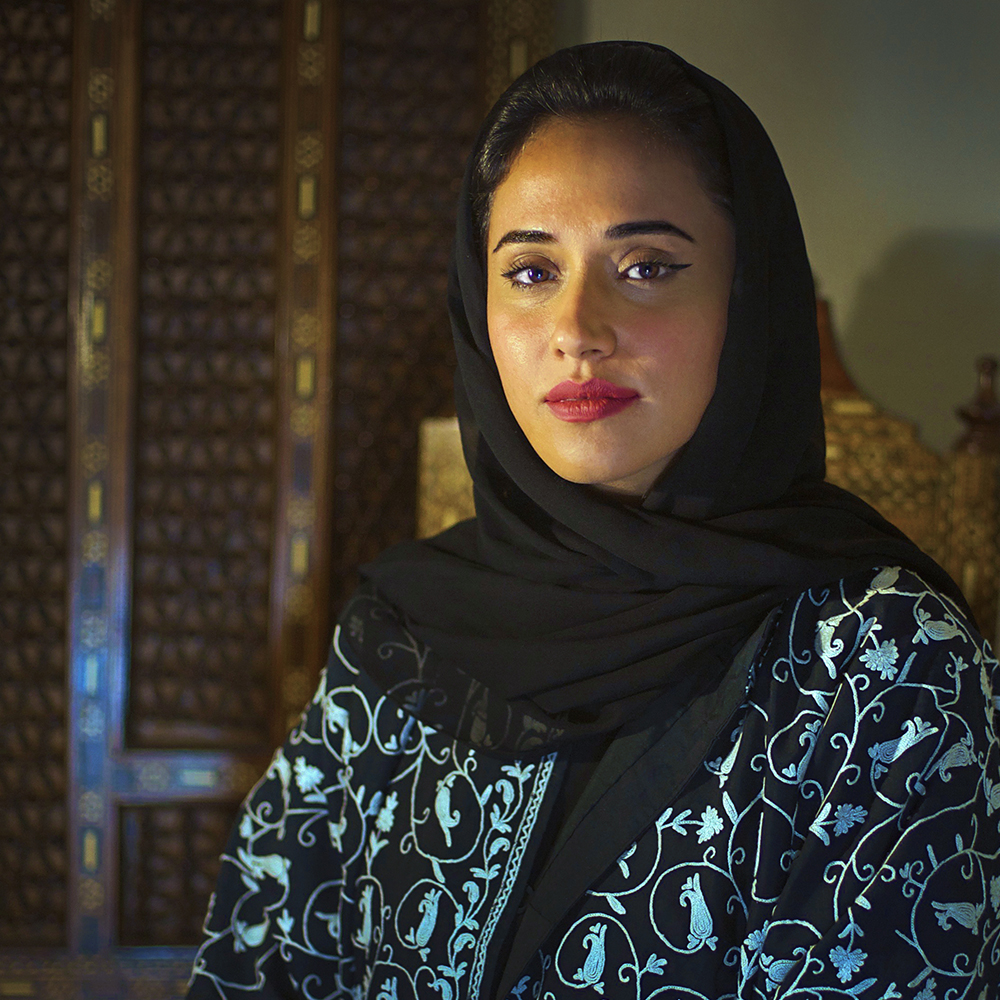
Curator Alia Zaal Lootah
Despite its mega-city infrastructure, at the core of Dubai is a village vibe — it is a relatively compact geography where many people know one another or are linked in some way. “Dubai has always been connected to its people and its makers,” says the artist and curator Alia Zaal Lootah. “The early relationship between the rulers and the tradesmen through the ports of Dubai has grown organically over time and created this connection between the people and the government.” This relationship is at the core of the Dubai Collection, a unique initiative that sees local collectors loan their art to create the city’s first institutional collection of modern and contemporary art. “The Dubai Collection creates a collaboration between the state, the collectors, the artists and the public,” Lootah adds. “It’s a beautiful initiative.”
This idea of community collaboration is at the heart of the latest exhibition of works drawn from The Dubai Collection. Curated by Lootah, the show is titled Encounters and presents a cross-generational lineup of 26 works by Emirati artists including Hassan Sharif, Mohammed Kazem, Mohamed Ahmed Ibrahim, Abdul Qader Al Rais, Shaikha Al Mazrou, Afra Al Dhaheri, Maitha Abdallah, Hashel Al Lamki and Sarah Almehairi. On show during Art Dubai 2024, the works are grouped together to bring out the connections between the works and the artists.
Here, Lootah discusses the different generations of artists in UAE, how they connect to one another — and how the encounters between them go beyond the canvas.
What was the curatorial thinking behind this exhibition?
When you are putting together works from a collection that already exists, it is a really different way of curating an exhibition. I began thinking about it as putting works in conversation and this made me think about the relationships between the artists of the UAE themselves and the real-life conversations they have. It’s a small group of artists that is growing with each generation, but the encounters that the artists have with one another create connections. There are natural connections between them, given the fact that they have lived similar experiences, growing up in the same cities, be it in Dubai, Sharjah, or Abu Dhabi and often work with the same materials and similar influences.
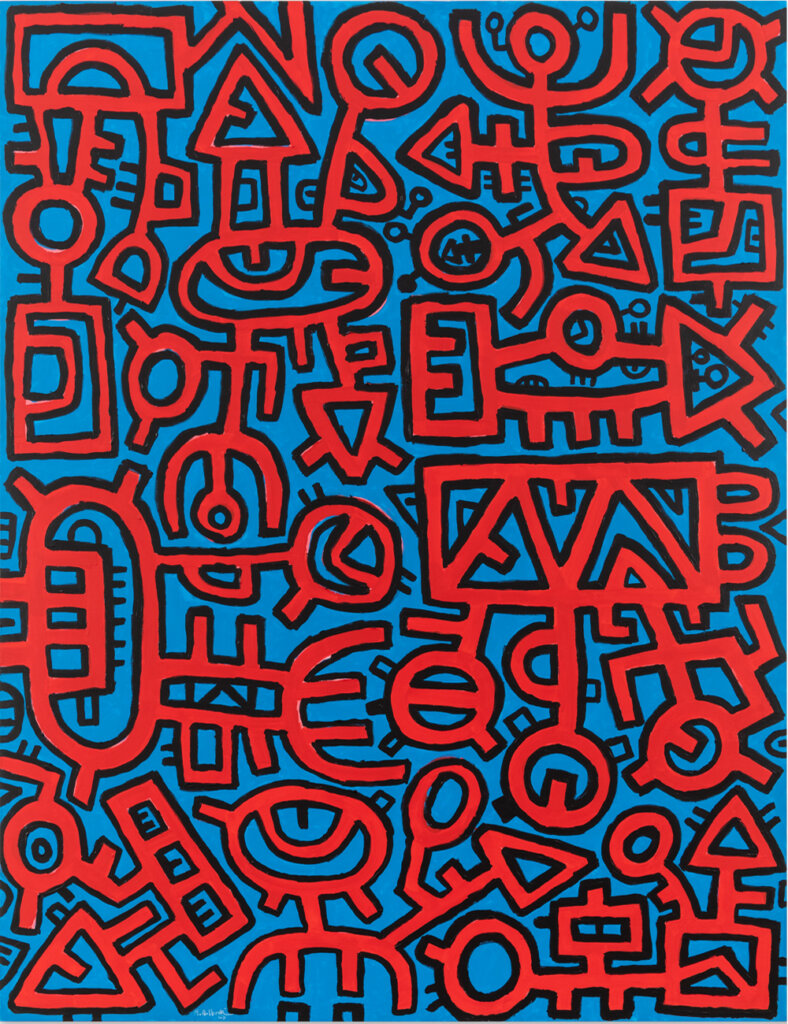
Mohamed Ahmed Ibrahim, Book Cover I, 2020, Khaled and Hana Habbal collection, image courtesy of the artist and Lawrie Shabibi
The works in the exhibition will be presented as encounters, just like two people meeting. This way, the curation doesn’t force any conceptual or philosophical framework. Visitors should just be able to see similarities between the works in the way of thinking and working with form, materials and subject matter.
Each of these works come from a collector and every collector has their own reason for buying something, but it is often something that intrigues them and creates a kind of curiosity. I wanted to present this exhibition in the same manner as the collector would in their homes or in these private spaces, so as to create a natural experience for visitors. It’s really about creating a playfulness with the collection and giving the visitors a chance to see something that is otherwise private.
Can you give some examples of works that are in dialogue with one another?
Sarah Almehairi (b.1998) is one of the youngest artists in the exhibition while Mohamed Ahmed Ibrahim (b.1962) comes from the first generation of artists in the UAE but there is a dialogue between their works. Almehairi’s collage work Landing (2021) will be shown beside Ibrahim’s oil painting Untitled 18 (2017) and between them you can see a shared idea of playfulness, the use of geometric repetition, and a shared formal aesthetic.
“The works in the exhibition will be presented as encounters, just like two people meeting. This way, the curation doesn’t force any conceptual or philosophical framework.”
Can you give some examples of works that are in dialogue with one another?
Sarah Almehairi (b.1998) is one of the youngest artists in the exhibition while Mohamed Ahmed Ibrahim (b.1962) comes from the first generation of artists in the UAE but there is a dialogue between their works. Almehairi’s collage work Landing (2021) will be shown beside Ibrahim’s oil painting Untitled 18 (2017) and between them you can see a shared idea of playfulness, the use of geometric repetition, and a shared formal aesthetic.
The show is intergenerational. Can you share some of the artists from each generation of Emirati art history?
The youngest generation includes Almehairi and the painter Almaha Jaralla (b.1996). There is also Shaikha Al Ketbi (b.1995), Rawdha Khalifa Al Ketbi (b.1997) and Ayesha Hadhir (b.1994), who have their own individual practices but often work together and are all from Abu Dhabi. The generation before that would be artists such as Hashel Al Lamki (b.1986), Shaikha Al Mazrou (b.1988), Afra Al Dhaheri (b.1988). Then the generation before that would be Ebtisam Abdul-Aziz (b.1975), Mohammed Kazem (b.1969) and Salma Al Marri (b.1962). And then there’s the pioneers like Hassan Sharif (b.1951). The art scene in the UAE may seem young but each generation is influencing one another and each comes up with their own style and approach to art.
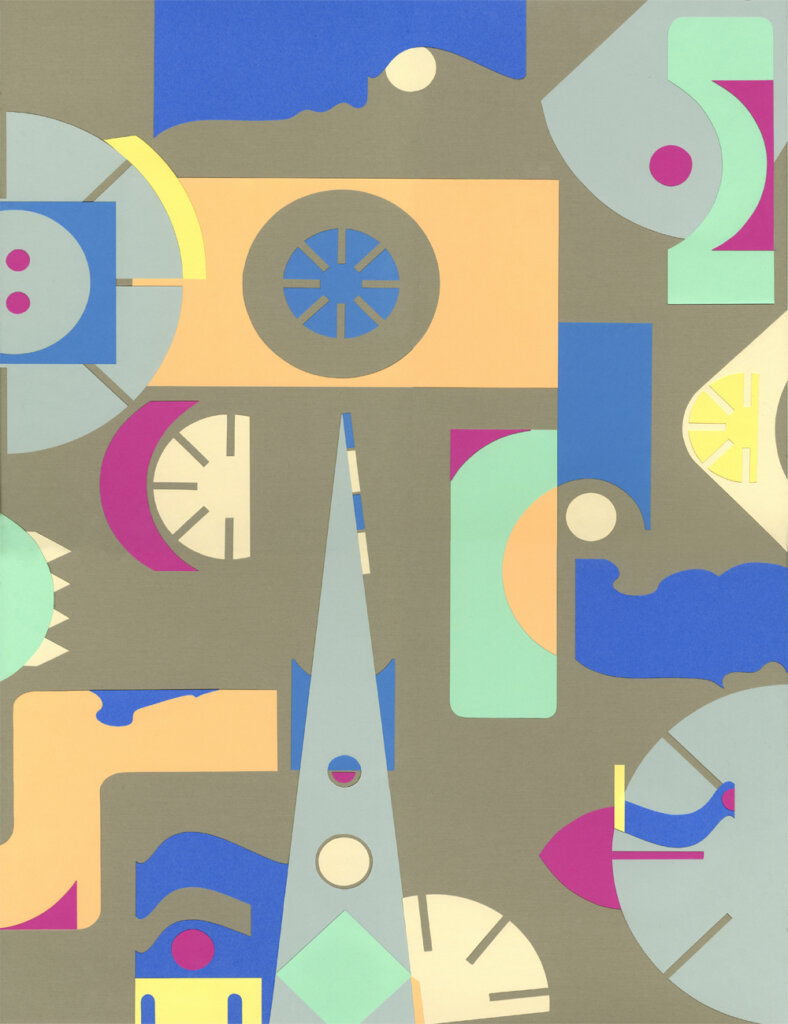
Sarah Almehairi, Gentle Giants, 2021, Jamil Hallak collection, image courtesy of CARBON 12 and the artist
What new and distinct elements are you seeing in younger Emirati artists’ works?
I see some of the younger generation experimenting more with digital arts, audio and installations. Other generations have also used newer technologies—such as Ebtisam Abdul-Aziz, who has used performance and video in her conceptual works—but because we now have the internet as a platform for exhibiting art and the rise of social media, it is even more prevalent in artists’ works today.
How do earlier generations of Emirati artists react to their younger descendents?
As an Emirati artist myself, I can say that we, as a group, are all friends. We often have dinners together and constantly have conversations. I think we’re very lucky to be in a growing country where, because of the tight community of artists, we all have this bond. Even the pioneers worked together and became known as “The Five”, made up of Hassan Sharif, his brother Hussain Sharif, Mohammed Kazem, Mohammed Ahmed Ibrahim and Abdullah Al Saadi. Hassan Sharif had a mentor relationship with Kazem, for example, who was a little younger. This bond was very impactful. Being part of one group that cared about art in the UAE really helped artists and the industry to grow in the country. We still see that with artists in the UAE today.
Dubai Collection showcase ‘Encounters’ will be unveiled at Art Dubai from March 1-3, 2024.





